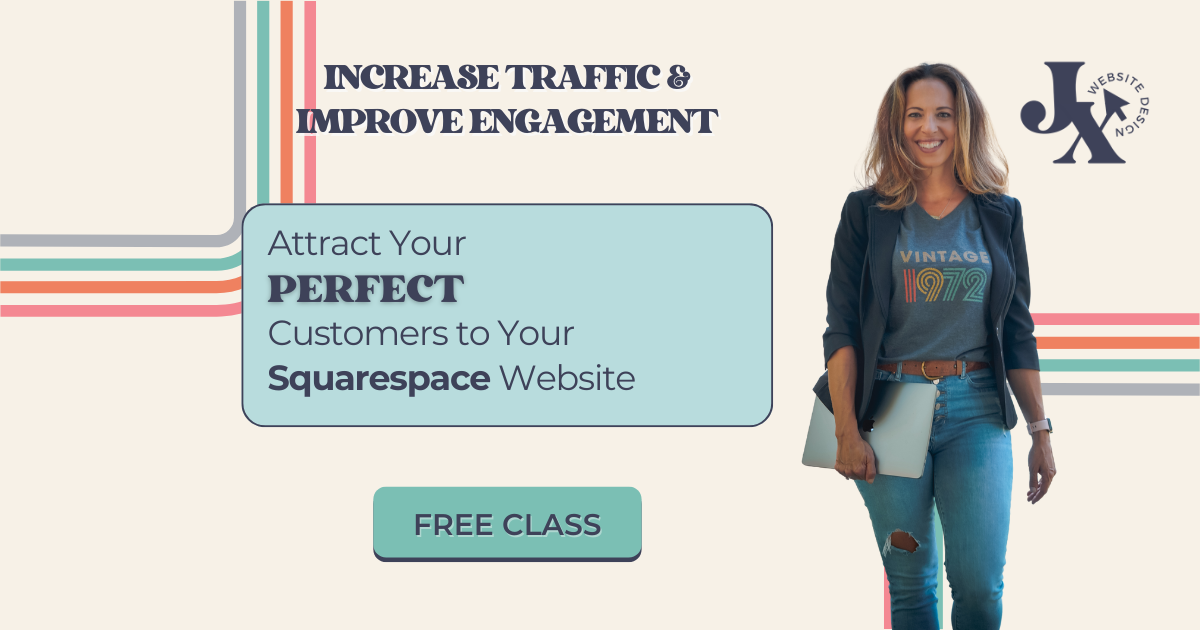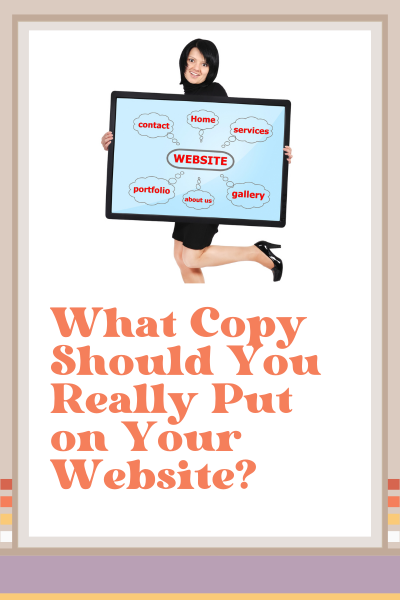What Copy Should You Really Put on Your Website?
Writing website copy can feel overwhelming—especially when you’re not sure where to start. Many people feel like they need to include everything, just in case it matters. But this approach often backfires.
Too much information confuses visitors, waters down your message, and makes it harder for people to take action. Your website should guide people toward working with you—not send them into information overload.
Here’s a guide to help you write better website copy by giving your visitors only what they need to take the next step.
Keep It Focused: Say Enough, But Not Everything
Your website is not the place to dump your entire life story or list every single service detail. Think of it like a resume—its job is to get the interview, not the job itself. In other words, it should pique interest, not overwhelm.
Every word on your website should help your visitor:
Understand what you do and how it makes their lives better
Let them know what success will look like if they do business with you
Understand what failure looks like if they don’t do business with you
Know how to move forward
If it doesn’t serve one of those purposes, cut it.
FAQ
Q1: Do I need to include everything I offer on my website?
A1: No. Focus on your most important services or offers. You can always provide more detail once someone reaches out.
Q2: What if I leave something out that someone wants to know?
A2: Let them ask! A little curiosity is a good thing—it creates engagement and opens the door for a conversation.
Navigation Matters More Than You Think
Clean, strategic navigation is one of the most underrated elements of effective website copy. Visitors are trying to figure out where to go next. If you give them too many choices—or send them to low-converting or unnecessary pages—you’re making their decision harder, not easier.
Messy menus can:
Create decision fatigue
Lead visitors to dead ends
Waste time and attention
Drive potential customers to your competitors
Stick to the essentials: Services, Blog, and possibly a Login option if accounts are necessary. Always use a strong, clear CTA in the upper right corner, not a "Contact" link. Contact info can live quietly in the footer.
FAQ
Q1: Should I include every possible page in my main navigation?
A1: No. Simpler navigation leads to better user experience and stronger conversions.
Q2: Why don’t you include a Contact link in the nav?
A2: It competes with your CTA. Put contact info in the footer and let your CTA guide the next step.
The Case Against the About Page (Kind Of)
Not every site needs an About page. In fact, I often recommend skipping it altogether—unless it’s done strategically.
Spoiler alert: Your website should be about your customer, not you.
Still, do include a short section on your homepage to show your authority as their guide. People only care about you to the extent that you can solve their problem. They don’t care about your dog, your kids, your childhood, favorite foods, etc., so leave those boring details out. If you find yourself including these useless details, chances are you are making your business about you and not about your customer.
FAQ
Q1: Can I still talk about myself somewhere on the site?
A1: Yes, briefly. Just make sure it ties directly into why you're qualified to help.
Q2: What makes a good About section if I choose to include one?
A2: Keep it short, focused on your authority, and relevant to your customer’s problem and how you are uniquely positioned to solve it.
What You Do Need on Your Website
Here’s a quick checklist of must-have website copy sections:
Headline + Subhead (on the homepage): Clearly state what you do, how it makes their lives better, and how they can get it.
The Pain They're Feeling: Acknowledge the struggle your audience is facing so they feel seen and understood.
The Value You Offer: Show the transformation or outcome you help them achieve.
Why You’re the Right Choice: Back it up with trust signals like testimonials, results, media mentions, or stats that reinforce your credibility.
Clear Path to Work With You: Offer a simple, unmistakable way for them to take action.
Lead Generator: Include at least one irresistible freebie that allows visitors to engage without committing.
Blog: The most important asset on your website—this is where trust is built and your authority shines.
Depending on your business model, you might also consider including:
Portfolio: Helpful if visuals or past work are a key part of your offering.
Login: Necessary if clients need access to a private portal or dashboard.
Resource Library: Great for sharing lead magnets, helpful downloads, and even links to trusted affiliate partners—all in one organized space.
Every business is different—there's no one-size-fits-all template. But the "must-haves" mentioned above apply to nearly every type of business. Consider these additional elements based on what your audience needs and how they interact with your brand.
Strategically placed FAQs are also helpful—but they should live on the relevant pages—not on their own page. Putting them on their own page is out of context and can be confusing if you have multiple services and/or products. Visitors appreciate them, and they help with conversions (and save you from repeating yourself).
FAQ
Q1: Where should I place FAQs on my site?
A1: Right where they’re needed—like your service pages or pricing pages. Basically, put them on the page that belongs to the thing(s) they are referencing.
Q2: What types of questions belong in FAQs?
A2: Any recurring questions, objections, or clarifications that help someone feel more confident taking the next step.
A Final Word on Strategy
You don’t need to list every feature of your service, every possible use case, or every credential you’ve ever earned.
Be strategic. What do your customers really want? What does success look like? What’s the cost of not working with you?
Tell that story and watch your website reduce bounce rates, increase time on page, generate more inquiries, and start engaging the right people.
This page contains affiliate links
Like this post?












